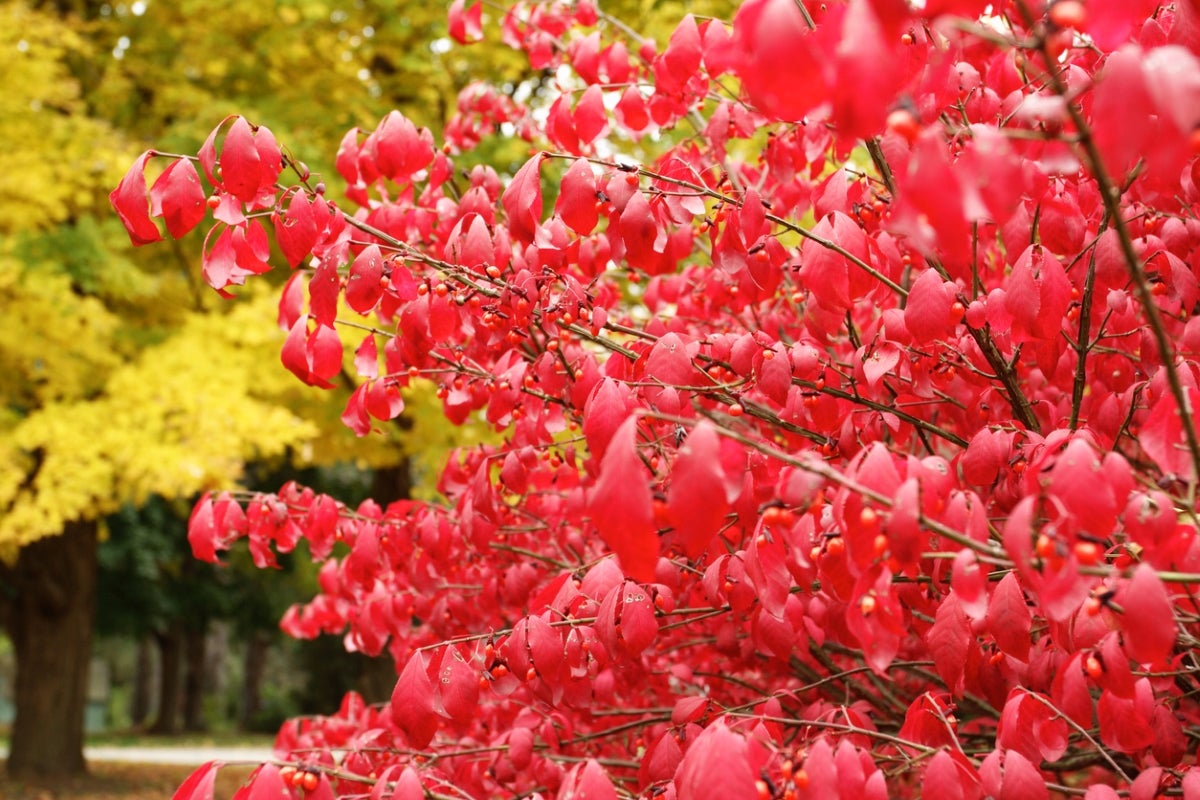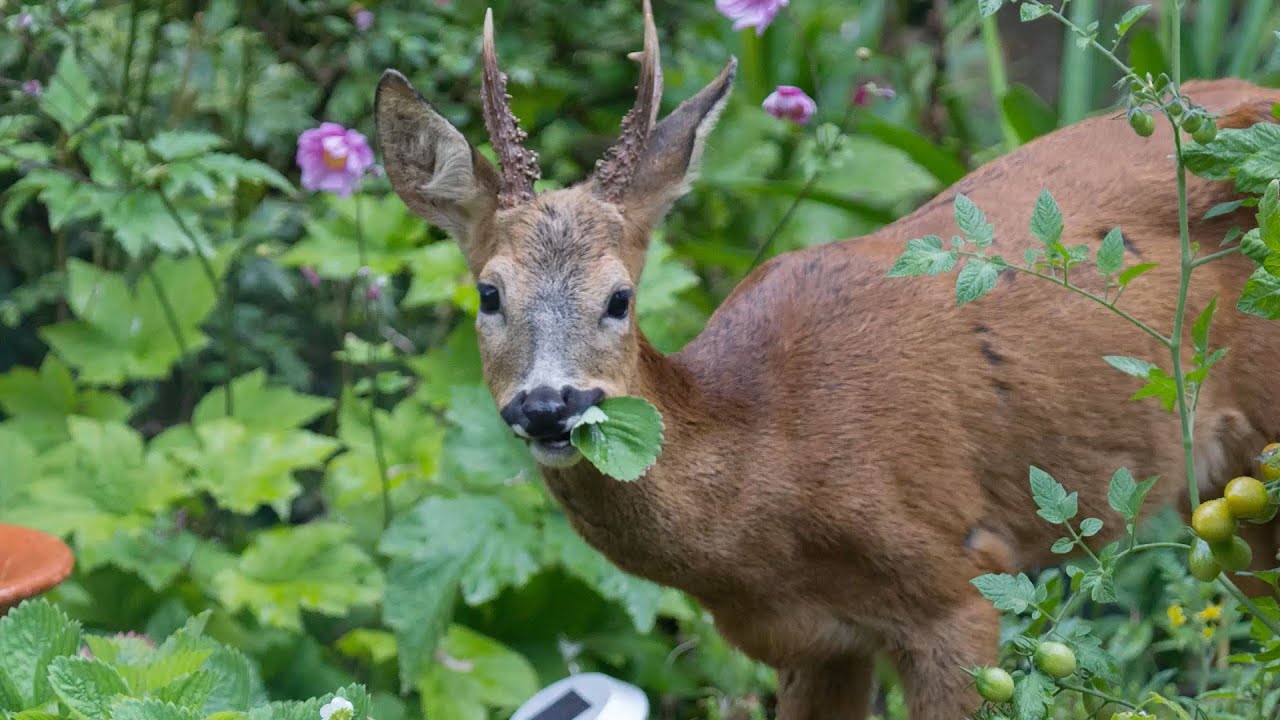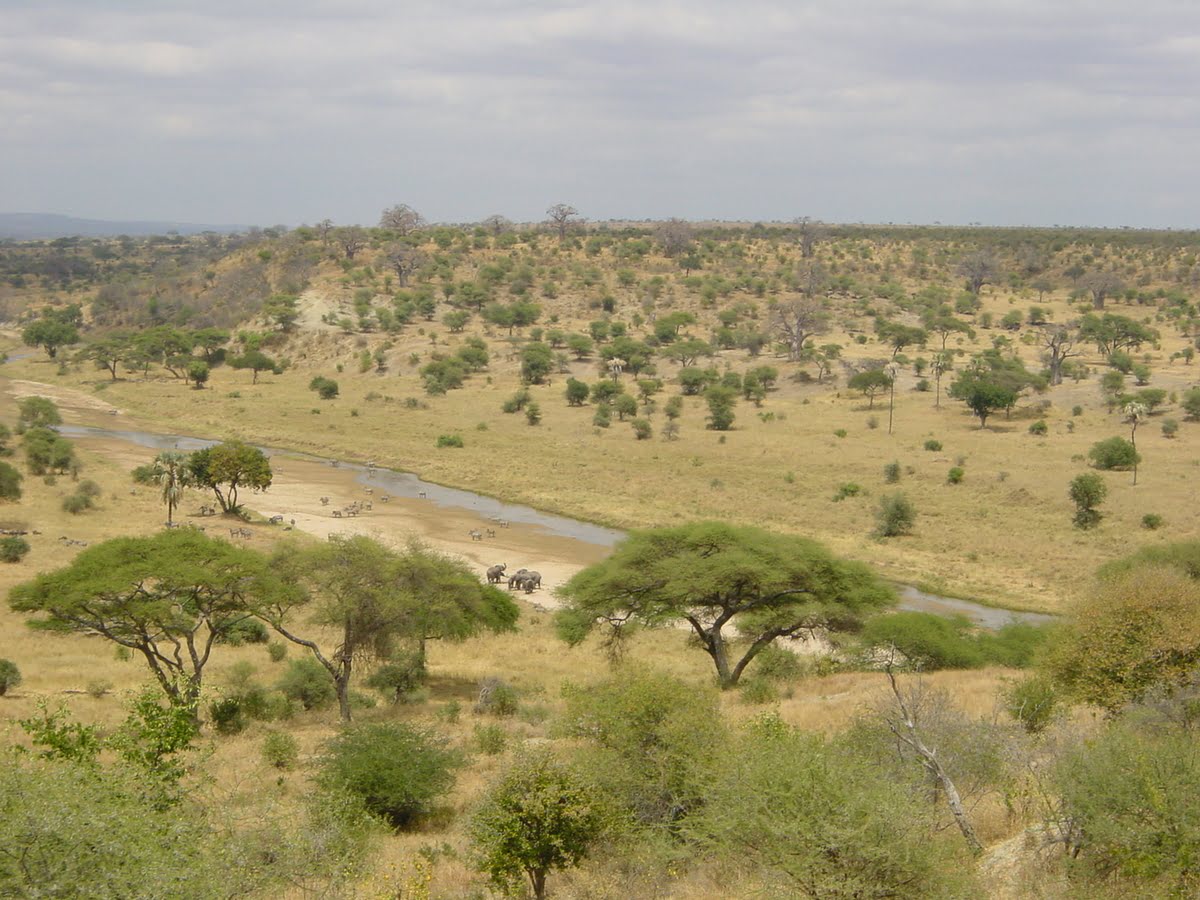Home>Types of Gardening>Ornamental Gardening>What Organisms Live In Shrubs


Ornamental Gardening
What Organisms Live In Shrubs
Modified: February 8, 2024
Discover the fascinating world of ornamental gardening and the diverse range of organisms that inhabit shrubs. Uncover the hidden ecosystem within your own backyard.
(Many of the links in this article redirect to a specific reviewed product. Your purchase of these products through affiliate links helps to generate commission for Chicagolandgardening.com, at no extra cost. Learn more)
Table of Contents
Introduction
Shrubs are an integral part of our natural landscapes and ornamental gardens. With their vibrant foliage, colorful flowers, and unique structures, shrubs not only enhance the aesthetic appeal of our surroundings but also play a crucial role in supporting diverse organisms. From insects and birds to lichens and mosses, shrubs provide a thriving habitat for a wide range of creatures.
Shrubs serve as vital components of ecosystems, contributing to biodiversity and ecological balance. They provide shelter, food, and nesting sites for various organisms, making them essential for the survival and growth of numerous species. Whether in natural habitats or urban gardens, these versatile plants create a sanctuary for life.
In this article, we will delve into the fascinating world of shrubs and explore the rich biodiversity that they support. We will discuss the importance of shrubs in ecosystems, the different organisms that inhabit them, and the intricate relationships that exist within this vibrant microcosm.
Join us as we unravel the hidden world of shrubs, revealing the astounding array of life that thrives within their branches and leaves.
Importance of Shrubs in Ecosystems
Shrubs play a crucial role in supporting healthy ecosystems. They provide numerous benefits that contribute to biodiversity, soil health, and overall ecological balance. Let’s explore the various ways in which shrubs are important in ecosystems:
1. Habitat Creation: Shrubs offer shelter and nesting sites for a wide range of organisms, including birds, small mammals, and insects. Their dense foliage and intricate branching structures provide protective cover from predators and harsh weather conditions.
2. Food Sources: Many animals rely on the fruits, seeds, and nectar produced by shrubs as a food source. Birds and small mammals are particularly dependent on the berries and seeds that are abundant in shrubbery. In turn, these animals contribute to seed dispersal, helping shrubs reproduce and colonize new areas.
3. Soil Conservation: The root systems of shrubs help prevent soil erosion by binding the soil particles together. They also enhance water infiltration and nutrient retention in the soil, promoting overall soil health. This is especially important in areas prone to erosion, such as slopes or riverbanks.
4. Oxygen Production and Carbon Sequestration: Like all plants, shrubs play a vital role in the process of photosynthesis, converting carbon dioxide into oxygen. This helps purify the air and contributes to the regulation of atmospheric gases. Additionally, shrubs have the ability to sequester carbon, mitigating the effects of climate change by storing carbon dioxide in their woody tissues.
5. Pollinator Support: Shrubs often produce showy flowers that attract a variety of pollinators, including bees, butterflies, and hummingbirds. These pollinators play a crucial role in the reproduction of both shrubs and other plant species, facilitating cross-pollination and ensuring the genetic diversity of plant populations.
6. Ecological Succession: Shrubs are often pioneer plants that colonize disturbed areas. Their ability to tolerate harsh conditions and quickly establish themselves makes them important in the process of ecological succession. As shrubs establish, they create the necessary conditions for other plant species to thrive, paving the way for a more diverse and stable ecosystem.
The importance of shrubs in ecosystems cannot be overstated. They provide habitat, food, and ecosystem services that support a wide range of organisms and contribute to the overall health and resilience of the environment. By recognizing and promoting the significance of shrubs, we can play an active role in conservation efforts and the preservation of biodiversity.
How Shrubs Provide Habitat for Diverse Organisms
Shrubs serve as vital habitat for a diverse array of organisms, offering shelter, nesting sites, and food sources. Their unique characteristics and structures make them ideal habitats for many species. Let’s explore how shrubs provide habitat for various organisms:
1. Shelter and Nesting Sites: The branching structure and dense foliage of shrubs provide excellent shelter for a wide range of organisms. Birds, small mammals, and even reptiles can find refuge within the safety of shrubbery. The thick vegetation creates a protective barrier against predators and adverse weather conditions, ensuring the survival of many species.
2. Fruits, Seeds, and Nectar: Shrubs are often prolific fruit and seed producers. The abundance of berries, fruits, and seeds serve as a valuable food source for birds, small mammals, and even insects. These organisms rely on the nutritional offerings of shrubs to sustain their populations and fuel their reproduction cycles. Additionally, the nectar produced by shrub flowers attracts pollinators such as butterflies, bees, and hummingbirds.
3. Nesting Materials: Some shrubs provide nesting materials for birds and small mammals. Twigs, leaves, and other plant debris from shrubs are used in the construction of nests, offering a safe and secure environment for raising young. The structure and proximity of shrubs to suitable foraging areas make them attractive nesting sites for many species.
4. Insect Habitats: Shrubs play a crucial role in supporting a diverse community of insects and other arthropods. The leaves, flowers, and stems of shrubs provide a variety of habitats and food sources for insects at different stages of their life cycles. From butterflies laying their eggs on specific shrub species to bees gathering pollen and nectar from shrub flowers, these organisms are intricately connected to the survival of shrubs.
5. Microhabitats: Shrubs create microhabitats within their branches and leaves, hosting a wide range of microorganisms such as bacteria, fungi, and algae. These microorganisms, in turn, contribute to nutrient cycling, organic matter decomposition, and the overall health of the surrounding ecosystem.
6. Vertical Variety: Shrubs add a vertical component to the habitat, which creates a diverse and layered habitat structure. This vertical diversity supports a wider range of organisms, providing opportunities for different species to inhabit different levels of the shrub canopy.
As we can see, shrubs are essential in providing habitat for diverse organisms. They offer shelter, nesting sites, food sources, and microhabitats that support a thriving ecosystem. By incorporating shrubs into our landscapes, we can create an environment that fosters biodiversity and promotes the well-being of numerous species.
Insects and Other Arthropods that Inhabit Shrubs
Shrubs are teeming with life, and insects and other arthropods make up a significant portion of the diverse organisms that inhabit them. These small but essential creatures play crucial roles in pollination, decomposition, and nutrient cycling. Let’s explore some of the insects and arthropods commonly found in shrubs:
1. Butterflies and Moths: Shrubs are often a favorite habitat for butterflies and moths, with their leaves serving as host plants for their caterpillars. Many species have specific shrubs as their preferred host plants, depending on the chemical composition and texture of the leaves. Shrubs such as milkweed attract monarch butterflies, while willows attract various species of moths.
2. Bees and Other Pollinators: Shrubs provide an abundant source of flowers, attracting various species of bees, including honeybees, bumblebees, and solitary bees. These pollinators play a crucial role in the reproduction of shrubs and other plant species, facilitating cross-pollination and ensuring genetic diversity. The nectar and pollen produced by shrub flowers serve as an essential food source for these insects.
3. Beetles: Beetles are among the most diverse group of insects and can be found in various habitats, including shrubs. They play important roles in decomposition and nutrient cycling, as some species feed on decaying plant matter, while others act as pollinators. Ladybugs are a well-known example of beetles that often inhabit shrubs, playing a valuable role in controlling aphid populations.
4. Spiders: While not technically insects, spiders are arthropods that can often be found in shrubs. They weave intricate webs among the branches of shrubs, acting as natural pest control agents by capturing and feeding on insects. Spiders are an important part of the shrub ecosystem, helping maintain the balance of insect populations.
5. Aphids and Other Insect Pests: While not desirable, shrubs also attract insect pests such as aphids, scale insects, and mites. These pests feed on the sap of shrubs, causing damage to the plants. However, they also attract predators like ladybugs, lacewings, and parasitic wasps, which help keep pest populations under control.
6. Ants: Ants are social insects that can form colonies within shrubs. They play various roles in the shrub ecosystem, including seed dispersal, soil aeration, and pest control. Some species of ants form mutualistic relationships with certain shrubs, offering protection and receiving nectar or shelter in return.
7. Grasshoppers and Crickets: Shrubs provide a habitat for grasshoppers and crickets, which feed on the leaves and stems of shrubs. They are important herbivores in shrub ecosystems, and their feeding activities can influence plant growth and influence the overall structure of the shrub community.
These are just a few examples of the many insects and arthropods that call shrubs their home. Each one contributes to the intricate web of life within the shrub ecosystem, playing valuable roles in pollination, decomposition, pest control, and overall ecosystem health.
Birds and Small Mammals that Rely on Shrubs for Shelter
Shrubs provide essential shelter and nesting sites for a variety of birds and small mammals. Their dense and intricate foliage provides protection from predators, harsh weather conditions, and serves as a safe refuge for many species. Let’s explore some of the birds and small mammals that rely on shrubs for shelter:
1. Birds: Many bird species find shelter and nesting sites within the branches and foliage of shrubs. Some birds, such as sparrows and thrushes, build their nests in the dense shrub canopy, using leaves, twigs, and other materials. The shrubs provide a secure place for them to breed and raise their young, offering protection from predators and harsh environmental conditions.
Other birds, like warblers and vireos, are highly dependent on shrubs for their migration and foraging activities. Shrubs provide them with a plentiful supply of insects and fruits, fueling their journey and supporting their population along their migratory routes.
2. Small Mammals: Various small mammals rely on shrubs for shelter, nesting, and protection. For example, rabbits and hares often seek refuge within shrubs, using the dense vegetation to hide from predators. The shrubbery provides a hiding place where they can rest during the day and forage for food during the night.
Small mammals like mice, voles, and shrews also find shelter and protection in shrub habitats. The intricate branching structure of shrubs offers them safe corridors and protective cover as they move through the landscape. Additionally, shrubs provide a suitable environment for these small mammals to build nests and rear their young.
Small mammals also play a role in dispersing seeds of shrubs, as they consume the fruits or seeds and disperse them through their droppings. This contributes to the spread and colonization of shrubs in different areas.
3. Urban Wildlife: Shrubs in urban areas provide important shelter for a diverse range of wildlife, including birds and small mammals. As urbanization expands, natural habitats diminish, making shrubs in gardens and parks crucial stepping stones and oases for these animals.
In addition to providing shelter, shrubs in urban environments provide a source of food and water. They attract birds that feed on berries and insects, and small mammals that forage on the vegetation. This integration of shrubs in urban landscapes helps support the survival of many species and promotes biodiversity in human-dominated areas.
Shrubs play a vital role in providing shelter and nesting sites for birds and small mammals. Their dense foliage and branching structures offer protection from predators, a safe place to rest, and opportunities for breeding and raising young. By including shrubs in our landscaping and conservation efforts, we can contribute to the well-being and survival of these important animal species.
The Role of Shrubs in Supporting Microbial Life
Shrubs are not only bustling with visible wildlife but also provide a vital habitat for a diverse array of microorganisms. The branches, leaves, and roots of shrubs support a thriving community of bacteria, fungi, algae, and other microorganisms. These microscopic organisms play crucial roles in nutrient cycling, organic matter decomposition, and overall ecosystem health. Let’s explore the role of shrubs in supporting microbial life:
1. Nutrient Cycling: Microorganisms associated with shrubs are involved in the breakdown of organic matter, cycling nutrients back into the soil. Decomposer bacteria and fungi break down dead plant material, releasing essential nutrients like nitrogen, phosphorus, and carbon. These nutrients are then made available to the shrubs and other surrounding plants, promoting their growth and vitality.
2. Soil Health: Microorganisms in the rhizosphere, the area around the roots of shrubs, play a vital role in maintaining soil health. They form mutualistic relationships with the shrub roots, exchanging nutrients and other compounds. Some bacteria and fungi help in nutrient absorption by the shrub roots, while others protect against pathogens by enhancing the plant’s immune system.
3. Nitrogen Fixation: Certain bacteria associated with shrubs have the remarkable ability to convert atmospheric nitrogen into a plant-usable form through a process called nitrogen fixation. This allows shrubs to access a vital nutrient that would otherwise be unavailable to them. In turn, the shrubs provide a home and nutrients for these nitrogen-fixing bacteria, forming a mutually beneficial relationship.
4. Mycorrhizal Associations: Many shrubs form mutually beneficial relationships with fungi known as mycorrhizae. These symbiotic fungi colonize the roots of the shrubs, extending their network of hyphae into the soil. In exchange for carbohydrates from the shrub, the fungi enhance the shrub’s ability to absorb water and nutrients from the soil, improving its overall health and resilience.
5. Carbon Sequestration: Microorganisms associated with shrubs play a role in carbon sequestration by storing carbon in the form of organic matter in the soil. This can help mitigate climate change by reducing the amount of carbon dioxide in the atmosphere.
Shrubs provide a dynamic and vibrant habitat for microorganisms, contributing to nutrient cycling, soil health, and carbon sequestration. The intricate relationships between shrubs and microorganisms demonstrate the interconnectedness of all living organisms within an ecosystem. Recognizing the importance of microorganisms in shrub ecosystems enhances our understanding of their ecological significance and the need to protect and preserve these habitats.
Lichens and Mosses Found on Shrubs
Shrubs provide a welcoming environment for the establishment and growth of lichens and mosses. These unique organisms, often overlooked due to their small size, play important ecological roles and contribute to the overall beauty and diversity of shrub habitats. Let’s explore the lichens and mosses commonly found on shrubs:
1. Lichens: Lichens are fascinating symbiotic organisms made up of a partnership between fungi and algae or cyanobacteria. Shrubs provide a platform for lichens to colonize, offering a surface for attachment and exposure to sunlight. Lichens can be found growing on the branches, bark, and leaves of shrubs, enhancing their visual appeal. They come in various forms, including crustose, foliose, and fruticose, each having unique growth patterns and ecological adaptations.
Lichens play important ecological roles in shrub habitats. They contribute to nutrient cycling, especially in nutrient-poor environments, by capturing atmospheric nitrogen and enhancing soil fertility. Lichens are also sensitive indicators of air quality, as they are highly susceptible to air pollution. By monitoring the health and diversity of lichen species on shrubs, we can gain insights into the environmental conditions in which they thrive.
2. Mosses: Mosses are non-vascular plants that typically grow in moist and shady environments. They can be found on the surface of shrub branches, in the leaf litter surrounding shrubs, and even on the ground beneath shrubs where moisture is retained. Mosses provide a lush and green backdrop to the shrubbery, adding to the visual appeal of the landscape.
Mosses serve important ecological functions within shrub habitats. They help retain moisture, creating microhabitats that support a diverse range of organisms, including insects and small invertebrates. The dense growth of mosses also acts as insulation, protecting the soil and roots of shrubs from temperature extremes. Additionally, mosses contribute to soil development by trapping and accumulating organic matter, aiding in nutrient cycling and soil fertility.
The presence of lichens and mosses on shrubs not only enhances the aesthetic appeal of these plants but also provides important ecological benefits. These organisms contribute to nutrient cycling, soil development, and microhabitat creation, supporting a diverse community of other organisms.
It is crucial to recognize the value of lichens and mosses in shrub habitats and ensure their continued presence. As stewards of the environment, we can appreciate and protect these organisms by preserving natural areas, minimizing pollution, and promoting sustainable landscaping practices.
Conclusion
Shrubs are not just beautiful ornamental plants; they are vital components of ecosystems, supporting a multitude of organisms that rely on them for shelter, food, and reproductive opportunities. From insects and birds to lichens and mosses, shrubs create a diverse and thriving habitat that contributes to the overall health and balance of our natural landscapes.
Throughout this article, we have explored the importance of shrubs in ecosystems, examining how they provide habitat for diverse organisms. We have learned about the insects and other arthropods that inhabit shrubs, such as butterflies, bees, and spiders, each playing a unique ecological role. We have also discovered how shrubs provide shelter for birds and small mammals, offering safe nesting sites and protective cover.
Moreover, we have explored the role of shrubs in supporting microbial life, including the nutrient cycling facilitated by bacteria and fungi, the mutualistic relationships with mycorrhizae, and the unique contributions of lichens and mosses. These microorganisms and photosynthetic organisms enhance soil health, carbon sequestration, and the overall resilience of shrub habitats.
In conclusion, shrubs serve as vital hubs of biodiversity, connecting various organisms within intricate food webs and ecological relationships. By recognizing and appreciating the importance of shrubs in supporting diverse organisms, we can create and maintain habitats that promote the well-being of wildlife and contribute to the overall health of our ecosystems.
So, let us continue to cultivate our gardens and landscapes with the inclusion of shrubs, fostering a harmonious coexistence between humans and nature. Together, we can appreciate the beauty and value of shrubs while ensuring the preservation and conservation of these magnificent plants and the diverse organisms that depend on them.










